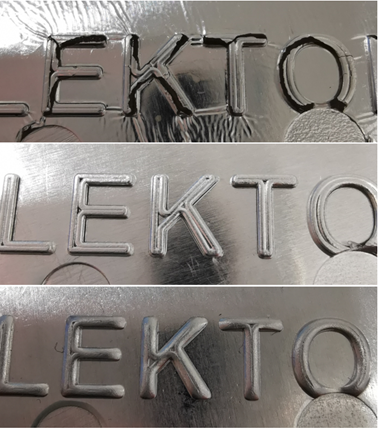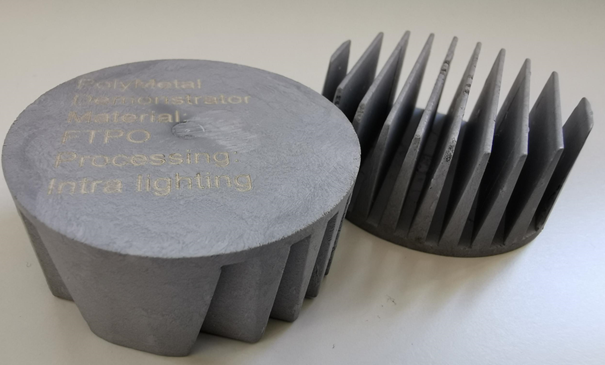Development of polymeric material with optic and haptic properties of metals
Metal products have a much higher aesthetic value than plastic products, which can be attributed to their optic and haptic properties, as they give the metal products a higher quality appearance. When we touch the metal surface, we feel a cool touch, which is not present on the surfaces of plastic products but can be achieved with the help of fillers with high thermal conductivity or by using technology where a thin layer of metal is applied to the polymer product. During the project PolyMetal we investigated the impact of both – we filled thermoplastic materials with high thermally conductive fillers and suitable amount of compatibilizer and back injection moulded thermoplastic polyurethane (TPU) on metal foil with hot melt adhesive with in mould labelling technology (IML). We have also tested some commercially available polymeric materials with a higher thermal conductivity value. For filled thermoplastic materials we used aluminium powder and boron nitride (BN) as high thermally conductive fillers, talcum, calcium carbonate (CaCO3), wollastonite and glass fibre (GF) as fillers for lowering the price and improving properties and high density polyethylene (HDPE), polyamide 6 (PA6), polycarbonate (PC), polypropylene (PP), polystyrene (PS) and acrylonitrile butadiene styrene (ABS) as thermoplastic matrix. For samples made with IML technology, a hot melt adhesive was first applied to the aluminium foil of various thicknesses (20 µm, 30 µm, 50 µm, 100 µm, 200 µm, 300 µm) and then TPU was back injection moulded onto them (figure). The mechanical and thermal properties and thermal conductivity were then measured.

Comparison of surfaces of test specimens, produced with IML technology with different aluminium foil thicknesses – from top to bottom: 20, 100 in 300 mm
We also performed an empirical test to test if the samples were cold to the touch, and made calculations of contact coefficient and contact temperature. We have found that by using only high-thermal conductivity fillers we cannot achieve metallic appearance, but we can provide a cool touch, but a sufficiently high proportion of the filler is required. The metallic appearance can best be achieved by using a metal foil. We have also found that cool touch with metal foil coating can be achieved with a metal foil thickness of at least 100 µm.
During project we have successfully developed 103 different material formulations, compounded 91 materials and injection molded 103 different series. We made 108 thermal conductivity measurements and 345 other laboratory measurements. Together with leading partner Gorenje d.o.o. and project partner from industry Intra ligthing d.o.o. we decided on final materials, therefore we compounded 5 kg of ABS with 60 % BN and silver masterbatch and 5 kg of PC with 60 % BN with silver masterbatch. Each partner then injection molded demonstrators with our material (figure).


Demonstrators produced with our own materials with higher thermal conductivity
Project is now finished and we are very happy with our achievements. The achivements are described also in the open access scientific publication »The Relationship between a Defined Microstucture within the Mold Surface and the Corresponding Roughness on the Part: A Systematic Study on Particle Size, Filler-, and Compatibilizer Content«. You can dowload the article on https://doi.org/10.3390/polym13162757.